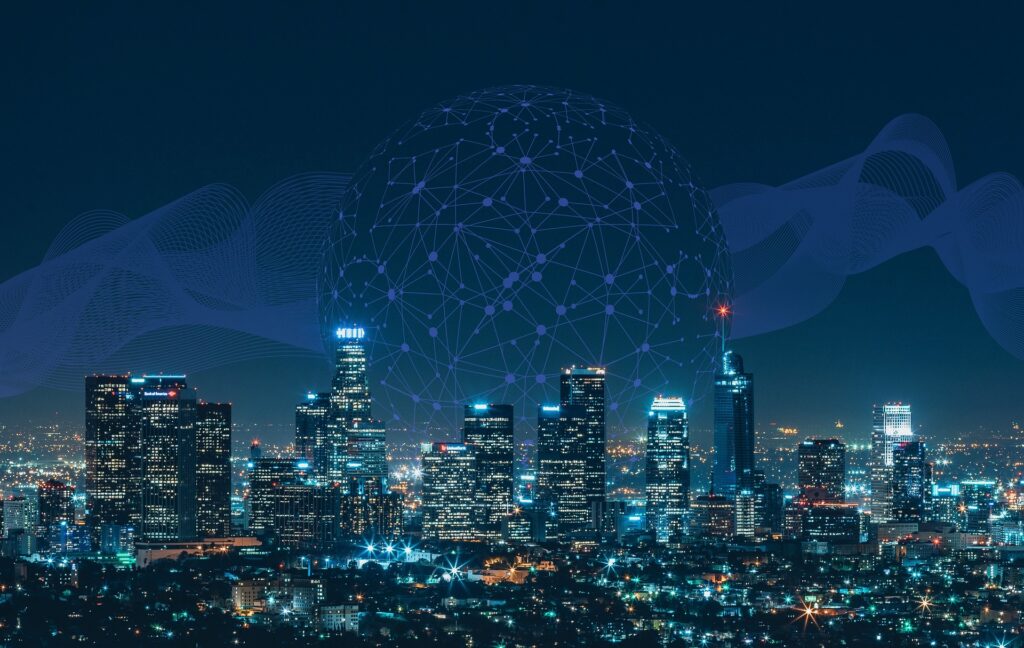
Turning waste into industrial gold could be a possibility, who would have thought? Well, with GRT (Granular Recovery Technology), this can be the reality of most industrialists.
Given the state of the environment and the need for a circular economy, companies are looking for more innovative solutions. Stick in GRT – and GRT is the solution to these problems, changes the resource recovery paradigm for efficiency and profitability. It is the focus of this presentation to look at how this technology works and how it is utilized in the street and more importantly, its industrial circles.
Can you tell us more about GRT or SRT? What is its function?
Granular Recovery Technology (GRT) is an innovative process specifically engineered for the recovery of useable materials from substrates and waste sources produced in the industrial and manufacturing processes. GRT employs advanced separation technology and efficient filtration techniques to recover as much of potentially reusable materials such as metals and minerals, and other raw materials that would have otherwise entered the waste stream. This closed-loop approach not only lessens the negative effect traditional disposal techniques have on the environment but also allows industries an economically viable alternative for wasting resources in the production process.
So with GRT, there is high precision in the recovery attack on granular recovery technology materials, sanctions for loss is kept low, and the aim for retrieval high, what emerges are powerful tools for cementing industries of mining, manufacturing and chemical processing.
It is modular and adjustable to fit specific waste profiles, which enhances its efficiency in various applications even further.
Granular Recovery Technology is a new process developed to recover and reclaim valuable particles, granules or materials from waste streams. GRT serves as a medium between waste and reuse, transforming trash into materials which can be put into use.
How Does it Work?
Most GRT systems utilize separation and filtration processes which include air classification, cyclone separator and magnetic recovery. The purpose of these components is to retrieve identifiable particles from a complex waste mixture.
Diverse Applications of Granular Recovery Technology
Granular recovery technology is making waves across a multitude of industries due to its versatility. In the mining sector, for example, GRT is used to recover gold and a range of other minerals from effluents thereby minimising waste and increasing profitability. Manufacturing sectors are also able to use this technology to recover raw materials such as polymers, metals and chemicals back into the production process reducing the costs and reliance on primary sources.
The chemical processing industry is also engaging GRT systems in the processes of extracting useful products or detoxifying waste products which are used for environmental management. Even in agriculture, GRT may retrieve nutrients out of agricultural runoff, or waste from livestock in order to produce fertilizers in eco friendly manners.
Its versatility even reaches to niche sites such as electronics waste management where it is instrumental in the extraction of rare elements from obsolete devices so as to meet the continuously increasing need for these materials in cutting-edge devices.
Because of GRT’s ability to provide customized options for specific waste types, it is cost effective and applicable to economical and environmental remediation offers across these different sectors and highlights its ability to revolutionize the course of resource recovery and management on a global scope.
Key steps include:
Key Steps in GRT Processes
Most GRT processes are implemented in a stepwise approach for ease of operation and maximum recovery of materials. These steps include:
Waste Stream Analysis
Before the actual recovery starts, a thorough characterization of the waste stream is done to find out what the residues contain and their characteristics. This helps in tailoring GRT systems to particular material types for better recovery outcomes.
Pre-Treatment
Pre-treatment prepares the waste stream to be suitable for processing. This can involve processes such as shredding, drying or any other conditioning process as a means of enhancing particle separation from the feedstock.
Separation and Recovery
In the case of GRT systems, they integrate a combination of any advanced technique such as air classification processes, gravity separation, magnetic filtration, or chemical dissolution in order to successfully target the required materials. Depending on the waste included and the materials targeted, each technique is selected.
Purification
Once the materials have been recovered, it is common for the materials that have been extracted to go through a secondary recovery process in order to improve their quality. An example is in the case of the metals that have been obtained, they may be treated so as to improve their concentration, while in the case of the chemical compounds, they are treated so as to eliminate the unwanted materials.
Reintegration or Repurposing
The last step consists of putting the recovered resources back into the cycle of production or using them for other available purposes. This not only plugs the gap in the waste-to-resource process but also adds huge value to the businesses.
The Future of GRT

Granular Recovery Technology has not yet reached maturity level as advances in material science coupled with the rise of automation and AI continues to unlock its potential. These developments are moving us towards more advanced and effective systems that are capable of handling more complex types of wastes. Demand for sustainable systems is increasing all over the world which means that Granular Recovery Technology will be an important instrument in the quest for greener systems which use resources more efficiently.
As GRT continues to develop and be adopted into new industries, businesses can simultaneously address waste management problems whilst unlocking new avenues for growth, making this technology an excellent fit in the future of resource management.
How is GRT Different from Other Recovery Methods?
As opposed to conventional waste management systems, GRT operates by concentrating on specific materials at a granular recovery technology level in an effort to reuse them. It’s wider, more narrowed down and usually meshes well with innovative technologies such as AI based sensors which enhances the recovery process.
Challenges in Implementing GRT
Despite the advantages that Granular Recovery Technology offers, bringing it into use has its fair share of challenges.
One of the problems is the high initial investment for GRT systems. Even though the potential cost and ecological efficiency in the long term is clear, many sectors are reluctant to invest in the required infrastructure and technology since it involves high initial costs.
Another difficulty is in the nature of the waste streams. The need for a range of distinctly different materials recovery processes means that recovery processes are often complex and expensive to create. Getting the waste stream materials in the right order and classifying them apart may need sophisticated testing and analysis, which adds to the complexity.
Furthermore, there is a lack of awareness in many industries concerning the desirability and possible uses of GRT. Education and literacy need to enhance for companies to appreciate how this technology can be employed within their organizations and benefit them.
Last but not the least, political and regulatory constraints in certain areas can hinder the growth of GRT. Some countries encourage environmentally friendly policies but do not have clear policies or incentives for advanced recovery technologies. Building these policies will require collaboration between industry and research as well as with policy makers to facilitate adoption of this disruptive technology at scale.
Closing the Loop with GRT
However, by dealing with the above issues, and with further development of these systems, GRT will create significant opportunities for industries to respond to the increased need for sustainable strategies.
This technology fills the missing link between waste management and resource efficiency, emphasizing the importance of waste management in circular economy principles and practices.
Granular Recovery Technology is not only an invention of resource recovery technology, it is an invention of change that transforms waste into opportunity. Companies that are able to capitalize on this potential will be the ones that change the landscape of the industry and pave the way for sustainability initiatives in the globally competitive market.
Applications of Granular Recovery Technology
1. Waste Management
Due to improper methods of disposal and management, municipalities and industries generate sewage and solid waste with a good percentage of material that can be recycled or reused. GRT can reclaim landfilled garbage and assist in the preservation of resources.
One case: In the United States, a recycling plant utilizes GRT tech to destroy aluminium and rare earth metals from eWaste, lowering the dependence on primary materials by 30%.
2. Mining and Minerals
Mining has always been associated with large amounts of dirt being created as waste and discarded, in that case, GRT looks good here as well, effectively recovering rarer and more valuable minerals to be used better.
One case: GRT is used in recovering gold particles from the tailings (mining leftovers) by mining operators, thus lowering the extraction cost and increasing resources output by about 20%.
3. Water Treatment
Water treatment plants use these engineered barriers in their filtration systems to protect the environment by concentrating the material to be safely discarded or recycled. GRT comes in hand when carrying out such processes.
One case: In order to conserve phosphorus granules, GRT is implemented at a water treatment facility that later resells them to agricultural companies as fertilizer.
4. Agriculture
The agricultural sector employs GRT technology to collect and reuse essential minerals that are lost through soil erosion or runoff in order to conserve the environment.
One case: GRT was used on a farm in the Midwestern region to recover nitrogen and potassium from livestock waste, thus closing the loop of nutrient leakage and saving fertilizer costs as well.
Advantages of Granular Recovery Technology
Why would your company consider GRT? The benefits come up in bundles here.
Cost Savings

Through recovering and reusing valuable resources, GRT cuts down the raw material purchasing costs, and this reduces operating costs across the various industrial sectors.
Environmental Impact Reduction
By turning byproducts into economic-forced resources, GRT reduces the waste output and dependence on landfills, and lowering the environmental pollution.
Regulatory Compliance
Environmental regulations are required in many industries, GRT enables companies to comply with such regulations in an efficient manner through effective waste management and recovery.
Enhanced Sustainability
By promoting a circular economy, GRT allows industries to improve the efficiency of resources used and work towards assimilating sustainable development objectives.
Just from the cost aspects one can see the enormous benefits of implementing GRT, but most importantly it allows for creativity and care for the environment for industries around the globe.
Environmental Sustainability
GRT, through the reuse of resources, contributes to waste reduction and the minimization of environmental damage. The extraction of natural resources is reduced, thus contributing to a reduction in the carbon footprint.
Economic Advantages
The long-term cost implications of GRT lead to the reclamation of materials at a far lesser expense. Companies are likely to spend less on raw materials and at the same time be able to obtain some income from the recycled materials.
Enhanced Efficiency
GRT focuses on recovery of resources at the granular recovery technology level, which optimizes industrial processes and results in improved overall production. Disadvantages and Constraints
While GRT holds plenty of promise, it also confronts certain challenges that need to be addressed by businesses that wish to explore it completely.
1. Initial outlays
What goes into GRT systems is high end technologies and the initial costs are steep. Smaller firms could find the cost to be a challenge.
2. Operational Difficulty
Technologies such as GRT are management intensive and often require experienced teams for effective implementation, management and optimization. Availability of trained human resources could add to the budget in the initial stage.
3. Regulatory Compliance
For GRT to be wholly adopted, there is a necessity for companies to be compliant with local, state or federal protocols – especially within the water or waste treatment industries.
The Future of Granular Recovery Technology
As of now, the future for GRT is as bright as it already is. The future for GRT looks promising with advancements in technology such as:
AI and Smart Sensors
GRT systems will be powered by advanced artificial intelligence systems which are expected to provide predictive capabilities for the system while also enhancing the accuracy of the material recovery.
New Industry Adoption
Pharmaceuticals and biomedical waste management are some of the new industries that stand to benefit from utilizing GRT for safer and sustainable practices.
The Circular Economy
GRT’s potential in minimizing waste generation and overlapping it with the reuse of already existing resources is its exporting feature that will assist in pushing the circular economy concept to practice.
Why Granular Recovery Technology Must Be The Next Step For You
Granular Recovery Technology is not just a complicated method or process, it is the future of how the industry works with its resources, wastes and sustainability. It doesn’t matter whether it is agriculture or mining, GRT stands to change the way resource recovery is defined today.
Is the industry truly ready to harness the power of this technology? This is more than a question. It is a concern that business leaders and policymakers need to consider if they are to make significant changes using GRT one grain at a time.
Case Studies Highlighting GRT Success
The practice of employing Granular Recovery Technology GRT in real life, allows us, step by step, realize its functionality in a range of different industries. A few of these detailed case studies are given below.
1. Revolutionizing E-Waste Recycling
A European based electronics recycling company used GRT technology to recover valuable metals, such as gold, silver and platinum from disposed devices. The company lost arms through GRT as material separation and separation was not as effective as it should be cumbersome even without GRT.
They reached a 40% improvement in resource recovery rates due to the use of advanced recovery equipment.
Impact: Thanks to this, the company’s dependence on newly exposed materials has reduced and the company itself has also made huge savings, all the while aiding in the circular economy.
2. Urban Settings Efficiently Managing Wastewater
In order to meet the needs of the growing urban population, a water treatment plant situated in Asia incorporated GRT into its operations. The facility not only contributed to cleaner effluent discharge by collecting heavy metals such as zinc and copper from industrial wastewater streams, but it also sold the recovered metals to local manufacturers and generated additional income.
Impact: Proving economic feasibility of GRT, modern waste treatment has provided two positive effects of improved quality of wastewater and additional source of income.
3. Green Farming Technologies from the Cutting Edge of Climate Solutions

In a South American region, a major agricultural cooperative adopted GRT to recycle organic nutrients from animal effluents. The cooperative cut its reliance on chemical fertilizers by 50% as a result of recovering phosphorus and nitrogen. Nutrient runoff into water bodies also reduced as this initiative curtailed harmful environmental impacts.
Impact: Making it possible to achieve enhanced yield sustainability and significant decrease in farming costs, hence, leading to a shift towards cleaner practices.
Wrapping Up Remarks for GRT
Granular Recovery Technology, quite frankly, is much more than just an inventive technology; it’s a defining technology in the transition towards more sustainable practices, circular economies, and better resource management. GRT assists industries in achieving environmental objectives while ensuring that there is business profitability by turning waste into opportunity. Companies that make use of such technologies now are bound to be the frontrunners in the sustainable industries of the future.
The shift towards a more greener, and resource efficient world is now more of an urgency. Granular Recovery Technology is not considered as a part of the solution but the energy that drives the change.
Conclusion:
To summarize, granular recovery technology is effective in resource management that is both environmental friendly as well as efficient. By allowing the recovery and reuse of valuable substances from waste, it not only helps resolve key environmental issues but does so with great economic advantages. Be it mining or water treatment, waste management or agriculture; GRT seems to be one of the practical solutions.
With time and advancement in technology the scope of granular recovery technology recovery systems will only increase allowing the achievement of a true circular economy where there’s minimal waste and maximum use of resources. And the extent to which this technology can be embraced is not widely considered a business opportunity rather, it’s an obligation to build a more sustainable world for future generations.
FAQs
Q1. Which industries have the most advantages of GRT?
GRT can be beneficial in the mining, waste, and agricultural industries, as well as water treatment processes and pharmaceutical companies Looking to recover resources.
Q2. What is the cost of adopting GRT?
The risks involve the initial cost associated with acquiring specialized equipment and training the staff on how to operate it. Nevertheless, future revenue and resource recovery often justify these installation expenses.
Q3. Can GRT assist my company in achieving its environmental objectives?
Permitting the most optimism possible permits the most optimism possible. GRT lowers the volume of waste generated, improves the efficiency of resources and the implementation of waste recovery targets which are essential for the company’s environmental objectives.
Q4. Is GRT suitable for small-scale businesses?
GRT narrowed its use to large industries but recently, the technology is becoming more promising for small and medium-sized businesses.
Q5. Where can I find more information concerning GRT solutions?
Keep your eyes peeled! We will be posting updates on GRT in business and its useful resources for business on regular basis.






